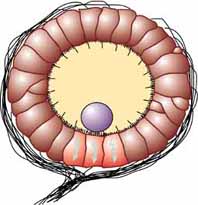Statocyst


The statocyst is a
bivalves,[1] cnidarians,[2] ctenophorans,[3] echinoderms,[4] cephalopods,[5][6] mollusca,[7] and crustaceans.[8] A similar structure is also found in Xenoturbella.[9] The statocyst consists of a sac-like structure containing a mineralised mass (statolith) and numerous innervated sensory hairs (setae). The statolith's inertia causes it to push against the setae when the animal accelerates. Deflection of setae by the statolith in response to gravity activates neurons
, providing feedback to the animal on change in orientation and allowing balance to be maintained.
In other words, the statolith shifts as the animal moves. Any movement large enough to throw the organism off balance causes the statolith to brush against tiny bristles which in turn send a message to the brain to correct its balance.
It may have been present in the common ancestor of cnidarians and bilaterians.[citation needed]
Hearing
In
Hz when the water temperature is above 8 °C (46 °F).[12]
See also
- Accelerometer
- Inertial guidance
- Müllerian vesicle, similar structure in loxodid ciliates
- Otolith, an equivalent structure in vertebrates.
- Statocyte, a similar structure in plants
- Sensory organs of gastropods
References
- .
- PMID 11539690.
- PMID 9202448.
- .
- .
- PMID 14507988.
- ISSN 0028-0836.
- S2CID 29494854.
- PMID 17434196.
- ^ "Scientists Find that Squid Can Detect Sounds".
- ^ "How Squid Hear: It's All in the Motion of the Ocean". 2 February 2011.
- ^ "Squid shown to be able to hear".



